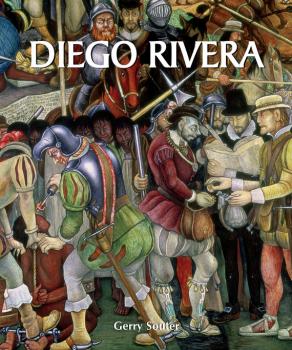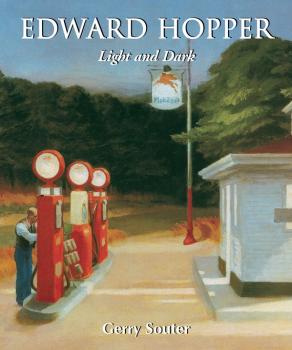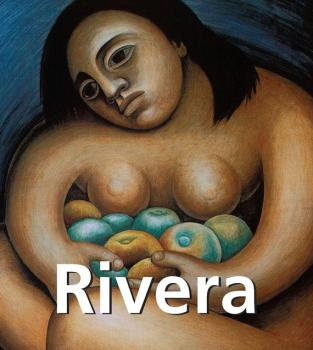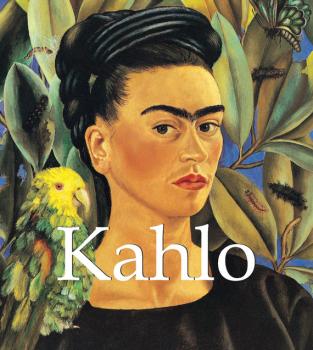Gerry Souter
Список книг автора Gerry SouterDiego Rivera
They met in 1928, Frida Kahlo was then 21 years old and Diego Rivera was twice her age. He was already an international reference, she only aspired to become one. An intense artistic creation, along with pain and suffering, was generated by this tormented union, in particular for Frida. Constantly in the shadow of her husband, bearing his unfaithfulness and her jealousy, Frida exorcised the pain on canvas, and won progressively the public’s interest. On both continents, America and Europe, these commited artists proclaimed their freedom and left behind them the traces of their exceptional talent. In this book, Gerry Souter brings together both biographies and underlines with passion the link which existed between the two greatest Mexican artists of the twentieth century.
American Realism
Urban realism, snow-covered streets of New York, boxing matches, children on the banks of a river, the painters of the Ash Can School preferred realistic images. Their paintings are a true hymn to noise and sensations. This unconventional movement enabled the birth of a true national artistic identity which broke free from the establishment. The Ash Can School resolutely promoted the affirmation of the modernist current of American art. Edward Hopper, who was a student of Robert Henri, embraced the principles of this movement and brought them to another level.
Edward Hopper. Light and Dark
In his works, Hopper poetically expressed the solitude of man confronted with the American way of life as it developed in the 1920s. Inspired by the movies and particularly by the various camera angles and attitudes of characters, his paintings expose the alienation of mass culture. Done in cold colours and inhabited by anonymous characters, Hopper’s paintings also symbolically reflect the Great Depression. Through a series of different reproductions (etchings, watercolours, and oil-on-canvas paintings), as well as thematic and artistic analysis, the author sheds new light on the enigmatic and tortured world of this outstanting figure.
Malevich
Pioneer of geometric abstract art and one of the most important members of the Russian Avant-garde, Malevitch experimented with various modernist styles. In reaction to the influence of Cubism and Futurism on artists in Russia, Malevitch in his art reduced the world of nature to basic elements and colours, such as in his Red Square (1915). He introduced his abstract, non-objective geometric patterns in a style and artistic movement he called Suprematism. One of the important names of the twentieth century, he however turned back to Primitivism once Russia’s communist leaders forced him to do so.
Rivera
They met in 1928, Frida Kahlo was then 21 years old and Diego Rivera was twice her age. He was already an international reference, she only aspired to become one. An intense artistic creation, along with pain and suffering, was generated by this tormented union, in particular for Frida. Constantly in the shadow of her husband, bearing his unfaithfulness and her jealousy, Frida exorcised the pain on canvas, and won progressively the public’s interest. On both continents, America and Europe, these commited artists proclaimed their freedom and left behind them the traces of their exceptional talent. In this book, Gerry Souter brings together both biographies and underlines with passion the link which existed between the two greatest Mexican artists of the twentieth century.
Kahlo
Behind Frida Kahlo’s portraits, lies the story of both her life and work. It is precisely this combination that draws the reader in. Frida’s work is a record of her life, and rarely can we learn so much about an artist from what she records inside the picture frame. Frida Kahlo truly is Mexico’s gift to the history of art. She was just eighteen years old when a terrible bus accident changed her life forever, leaving her handicapped and burdened with constant physical pain. But her explosive character, raw determination and hard work helped to shape her artistic talent. And although he was an obsessive womanizer, the great painter Diego Rivera was by her side. She won him over with her charm, talent and intelligence, and Kahlo learnt to lean on the success of her companion in order to explore the world, thus creating her own legacy whilst finding herself surrounded by a close-knit group of friends. Her personal life was turbulent, as she frequently left her relationship with Diego to one side whilst she cultivated her own bisexual relationships. Despite this, Frida and Diego managed to save their frayed relationship. The story and the paintings that Frida left us display a courageous account of a woman constantly on a search of self discovery.
Edward Hopper
In his works, Hopper poetically expressed the solitude of man confronted to the American way of life as it developed in the 1920s. Inspired by the movies and particularly by the various camera angles and attitudes of characters, his paintings expose the alienation of mass culture. Created using cold colours and inhabited by anonymous characters, Hopper’s paintings also symbolically reflect the Great Depression. Through a series of different reproductions (etchings, watercolours, and oil-on-canvas paintings), as well as thematic and artistic analysis, the author sheds new light on the enigmatic and tortured world of this outstanding figure.
Frida Kahlo
Behind Frida Kahlo’s portraits, lies the story of both her life and work. It is precisely this combination that draws the reader in. Frida’s work is a record of her life, and rarely can we learn so much about an artist from what she records inside the picture frame. Frida Kahlo truly is Mexico’s gift to the history of art. She was just eighteen years old when a terrible bus accident changed her life forever, leaving her handicapped and burdened with constant physical pain. But her explosive character, raw determination and hard work helped to shape her artistic talent. And although he was an obsessive womanizer, the great painter Diego Rivera was by her side. She won him over with her charm, talent and intelligence, and Kahlo learnt to lean on the success of her companion in order to explore the world, thus creating her own legacy whilst finding herself surrounded by a close-knit group of friends. Her personal life was turbulent, as she frequently left her relationship with Diego to one side whilst she cultivated her own bisexual relationships. Despite this, Frida and Diego managed to save their frayed relationship. The story and the paintings that Frida left us display a courageous account of a woman constantly on a search of self discovery.
Diego Rivera
Sie lernten sich 1928 kennen, als Frida Kahlo gerade einundzwanzig Jahre und Diego doppelt so alt war. Er genoss bereits internationale Anerkennung, als sie noch davon träumte. Aus ihrer stürmischen Beziehung erwuchs vor allem für Frida eine starke Kreativität, doch brachte sie auch großes Leid mit sich. Stets im Schatten ihres Mannes, dessen häufige Untreue sie genau so wie die eigene Eifersucht ertrug, lebte Frida ihren Schmerz auf der Leinwand aus und erlangte so nach und nach das Interesse der Öffentlichkeit. Die beiden engagierten Künstler verkündeten ihre Freiheit in Amerika und Europa und hinterließen hier wie dort die Spuren ihres unglaublichen Talents. In dieser wundervollen Doppelausgabe stellt Gerry Souter nicht nur die Biographien beider Künstler einander gegenüber, sondern hält dem Leser gleichzeitig mit viel Gefühl das dünne Band vor Augen, das die beiden größten mexikanischen Künstler des 20. Jahrhunderts zusammen hielt.
Amerikanischer Realismus
Der Amerikanische Realismus ist weder eine Kunstbewegung noch eine Schule, vielmehr ist er ein durch eine außergewöhnliche Vielfalt gekennzeichnetes Phänomen, das nur schwer zu definieren ist. Er wird oft als der erste eigene Kunststil der USA betrachtet und zerfällt in eine Reihe von Kategorien, etwa den „regionalen Realismus“, den Genre-Realismus oder auch den Porträt-Realismus, je nach Ort, Sujet und Modell. So könnte sich ein Maler, der die indianischen Ureinwohner im Westen der USA oder die Seeleute an der Ostküste porträtiert, durchaus als Vertreter des Regionalen Porträt-Realismus bezeichnen. Eine einheitliche Auffassung des Amerikanischen Realismus ist daher kaum möglich. Doch unbesehen aller Unterschiede gibt es eine frappierende Gemeinsamkeit der ihm zugeordneten Künstler: ihr Anliegen, der typisch amerikanischen Lebensart (dem American Way of Life) sowie ihrem Verständnis von Freiheit Ausdruck zu verleihen. Natürlich hängt das Ergebnis der Bemühungen jedes Einzelnen von seinem subjektiven Empfinden, seiner individuellen Wahrnehmung, seinem Intellekt, seinem familiären Hintergrund, seiner Erziehung und Ausbildung ab und nicht zuletzt auch von regionalen und ethnischen Einflüssen. Das Spektrum dieser heterogenen Kunst reicht von Winslow Homers poetisch angehauchten Aquarellen aus den 1860er Jahren über die fast unheimlich und stark symbolträchtig wirkenden Bilder eines Andrew Wyeth bis hin zu den in melancholisches Licht getauchten Szenen eines Edward Hopper der 50er und 60er Jahre des 20. Jahrhunderts. Dieser Band präsentiert ein über hundert Jahre umfassendes Kaleidoskop des Amerikanischen Realismus. Den Anfang machen US-amerikanische Maler, die noch stark der Tradition der europäischen Kunst verpflichtet sind und sich allmählich von dieser lossagen; am Ende haben wir die Vertreter der modernen Generation, deren auf amerikanischem Boden gewachsene schöpferische und teilweise rebellische Ideen auch in Europa großes Aufsehen erregen und die ihre Eigenständigkeit als eine Art neue Pioniere beweisen.









